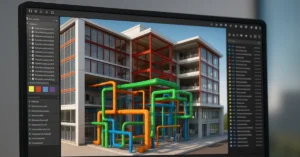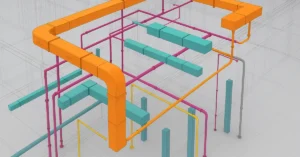Explore the powerful legacy and hidden beauty of Brutalist architecture in Saint Petersburg
Saint Petersburg is often celebrated for its classical elegance—baroque palaces, neoclassical façades, and ornate imperial structures dominate the skyline. But tucked between these historic marvels lies an entirely different architectural narrative: Brutalist buildings in Saint Petersburg. Emerging during the Soviet era, these raw, monolithic concrete structures challenged traditional notions of beauty and aesthetics. They offered something radically different—a modern, unapologetic style focused on function over form.
Though often misunderstood or overlooked, these brutalist buildings are now being rediscovered by architecture lovers and urban explorers who appreciate their honest design and socio-political roots. In this blog, we delve into the history, significance, and must-see brutalist sites in Saint Petersburg—unveiling an entirely new dimension of the city’s architectural soul.
What is Brutalism?
Brutalism is an architectural movement that emerged in the mid-20th century, primarily between the 1950s and 1970s. Characterized by the use of raw concrete (béton brut), geometric forms, and a stark, utilitarian aesthetic, Brutalism emphasized structure and materials over decoration. It was seen as a symbol of honesty and practicality during times of social and economic rebuilding.
In the Soviet Union, including Saint Petersburg (then Leningrad), Brutalism resonated with the ideals of collectivism and modern progress. Buildings were designed for mass use—universities, housing blocks, administrative centers—each built with robust materials to last for decades. The style was practical, economical, and ideological. It was architecture with a message.
A Brief History of Brutalism in Saint Petersburg
Saint Petersburg’s flirtation with Brutalism began during the Khrushchev Thaw, a period of cultural liberalization in the 1950s and 1960s. As Stalinist architecture was phased out, architects sought new design languages that could reflect a modern socialist state. Brutalism fit perfectly.
During the 1970s and 1980s, Brutalist buildings mushroomed across the city. They were practical solutions to urban expansion but also became canvases for ambitious architectural experiments. Though many fell into disrepair during the post-Soviet years, interest has surged recently in preserving these bold examples of modernist design.
Top Brutalist Buildings in Saint Petersburg
1. Saint Petersburg Sports and Concert Complex (SKK Peterburgsky)
Perhaps the most iconic brutalist structure in the city, the SKK Peterburgsky is a massive circular building constructed in the 1970s. Its enormous concrete shell supported by external pillars gives it a spaceship-like appearance.
The arena hosted sports events, concerts, and exhibitions for decades and became a cultural landmark. Although recently closed for renovation, it remains a vital symbol of Soviet-era brutalism.
2. Pribaltiyskaya Hotel
Located near the Gulf of Finland, the Pribaltiyskaya Hotel is a colossal concrete slab that offers stunning views of the Baltic Sea. Built in 1978 to accommodate international guests during major events, it boasts the characteristic blocky design and stark materials of Brutalism.
With over 1,200 rooms and extensive amenities, it was a hospitality megastructure—a “city within a building.” Today, it’s still operational, though partially modernized.
3. House of Soviets (Dom Sovetov)
A formidable example of Soviet-era brutalism, the House of Soviets was built to house government offices in the Moskovsky District. Its powerful symmetry, rigid lines, and dominant façade symbolize authority and function.
Though sometimes criticized for its intimidating appearance, many see it as a triumph of Brutalist design, unapologetically showcasing the ideals of order and permanence.
4. Saint Petersburg State University of Aerospace Instrumentation (GUAP)
Located near the city center, GUAP’s main campus is a brutalist masterpiece designed for function and longevity. The bold, angular concrete structure reflects the space-age optimism of the late Soviet period.
The university’s design makes use of overhanging slabs, recessed windows, and dramatic staircases—all hallmarks of Brutalism.
5. LDM Cultural Center
Short for “Leningrad Palace of Youth,” the LDM Cultural Center was once a vibrant hub for Soviet youth. Its clean geometric lines and austere materials embody the Brutalist style while offering vast interior spaces for performances and gatherings.
Though its function has evolved, the building remains architecturally significant.
6. Park Pobedy Metro Station Vestibule
Not all brutalist architecture in Saint Petersburg towers above the skyline. The entrance vestibule of Park Pobedy Metro Station is an example of subterranean Brutalism.
Its heavy concrete canopy and minimalist form create a sense of weight and permanence, embodying the values of strength and reliability that defined the Soviet metro system.
7. Technological Institute Metro Station Entrances
While the platforms themselves feature neoclassical décor, the above-ground entrances to this station are pure Brutalism. Boxy, angular, and stark, they contrast sharply with the older buildings nearby.
These metro entrances offer a fascinating juxtaposition of Saint Petersburg’s old and new architectural identities.
Why Brutalism Deserves a Second Look
Brutalist buildings in Saint Petersburg have long been overshadowed by the city’s ornate palaces and romantic canals. But there’s a growing appreciation for what these structures represent:
- Historical Value: They document the city’s post-war reconstruction and shifting ideologies.
- Architectural Innovation: Brutalism allowed architects to break away from rigid traditions and explore new forms.
- Cultural Significance: These buildings reflect Soviet values—collectivism, endurance, and egalitarianism.
- Photographic Appeal: The stark lines and textures of Brutalist structures are a playground for photographers and urban explorers.
In a world increasingly obsessed with minimalism and authenticity, Brutalist architecture is being reevaluated through a more appreciative lens. What was once seen as “ugly” is now admired for its brutal honesty and powerful visual language.
The Criticism and Challenges
Despite renewed interest, many Brutalist buildings in Saint Petersburg face threats.
- Neglect and Disrepair: Decades of exposure to harsh weather without proper maintenance have left many in poor condition.
- Redevelopment Pressure: Some are being demolished to make way for modern commercial developments.
- Public Perception: Older generations often associate them with Soviet authoritarianism and hardship, leading to a lack of community support for preservation.
Yet, preservationists argue these structures deserve the same cultural status as baroque or art nouveau buildings—they are, after all, part of the city’s evolving story.
The Future of Brutalism in Saint Petersburg
Thanks to renewed interest from younger generations, architects, and international tourists, Saint Petersburg’s brutalist buildings are slowly gaining recognition.
Initiatives are underway to catalog, restore, and even creatively repurpose many of these sites. Museums, coworking spaces, art galleries, and student centers are popping up in formerly abandoned concrete giants.
What once symbolized rigidity and uniformity is now being embraced as flexible and full of potential.
Architectural Tours and Photography Hotspots
If you’re visiting Saint Petersburg and want to explore its Brutalist architecture:
- Start with the SKK Peterburgsky and Pribaltiyskaya Hotel for grand scale.
- Venture to Dom Sovetov and GUAP for striking academic and governmental Brutalism.
- Don’t miss metro entrances like Park Pobedy for smaller-scale but high-impact examples.
- Capture textures, shadows, and geometry—Brutalism loves black and white photography.
Some local guides and architecture buffs even offer walking tours focused specifically on Soviet modernism and Brutalism, providing context that turns concrete into cultural gold.
Conclusion
Brutalist buildings in Saint Petersburg may not be everyone’s idea of beauty, but they are undeniably powerful. These bold structures tell the story of a city in transition—from imperial grandeur to socialist experimentation to contemporary reinvention.
By embracing their raw aesthetic, Saint Petersburg offers a more complete, nuanced, and layered view of its architectural identity. As the city continues to grow and evolve, preserving and appreciating its Brutalist heritage is not just an act of conservation—it’s a celebration of resilience, vision, and design that dared to be different.
If you’re interested in learning more about architecture firms in Europe, check out this comprehensive list of the top 50 firms compiled by Archgyan. From innovative startups to long-established industry leaders, this list has it all. Take a look and discover some of the most inspiring and influential architecture firms in Europe today.
If you’re interested in architecture and want to learn more about this amazing field, subscribe to our podcast on youtube
For more SketchUp tutorials, head to https://www.sketchupguru.com










